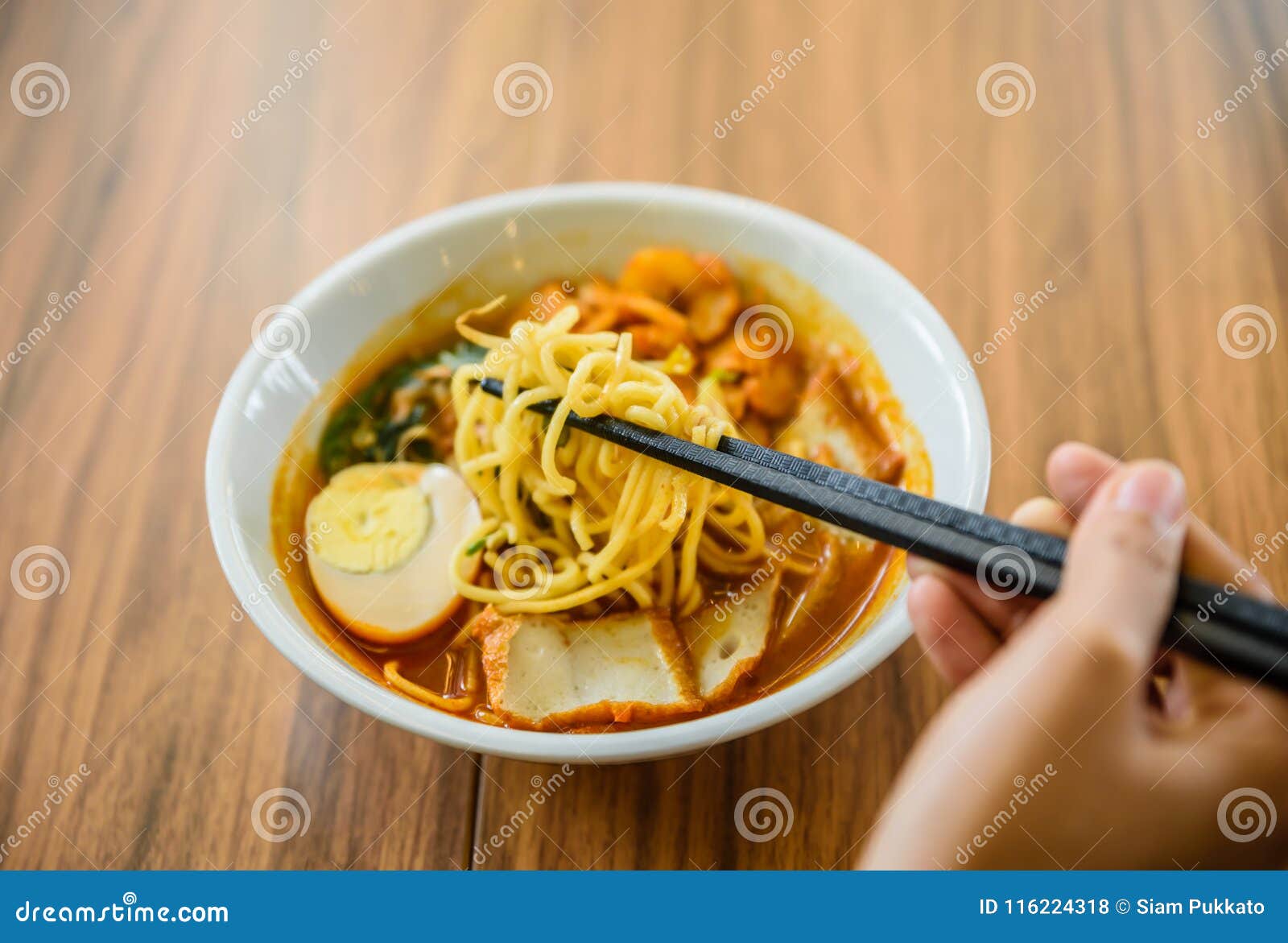Chopsticks might look intimidating at first, especially when paired with a bowl of slippery noodles, but once you get the hang of it, they can elevate your dining experience. Originating from ancient China, chopsticks are more than just utensils; they are a culinary art form that adds cultural richness to every meal. In this post, we’ll explore how to master the art of eating noodles with chopsticks, making your next bowl of ramen or pad thai both fun and flavorful!
The Benefits of Using Chopsticks for Noodles

Using chopsticks to eat noodles comes with a variety of benefits that can enhance not only your dining experience but also your health and well-being. Let’s delve into a few of these advantages:
- Improves Dexterity: Practicing with chopsticks helps to refine your fine motor skills. It engages your fingers and requires more coordination than using a fork, thus promoting hand-eye coordination.
- Reduces Overeating: You might notice that with chopsticks, you tend to take smaller bites. This can help control portion sizes, which is beneficial for maintaining a healthy diet.
- Enhances Mindfulness: Using chopsticks encourages you to slow down and savor your meal. This mindfulness can lead to greater enjoyment of your food, and can even help prevent overeating.
- Cultural Appreciation: Learning to eat with chopsticks is an invitation to immerse yourself in East Asian cuisine culture. It shows respect for the traditions surrounding the food and enhances the authenticity of your meal.
- Better Noodle Grip: The design of chopsticks allows you to pick up individual noodles or small clumps of them without crushing them, giving you a more enjoyable texture experience.
Beyond the practical benefits, using chopsticks can transform the act of eating into a playful and engaging experience. You can challenge yourself to pick up not just noodles but also other accompaniments like vegetables or tofu, making your meal even more fun.
When you're committed to mastering chopsticks, don't be afraid to seek out online tutorials or practice with friends. Soon, you'll be impressing not only yourself but also your dinner guests! Imagine sitting around a table, slurping noodles with the ease of a seasoned pro. It’s not just about food; it’s about connection and enjoyment.
So, grab your chopsticks and let the noodle adventure begin! There’s no denying that the path to noodle mastery is paved with patience, but the delicious rewards are well worth it.
Also Read This: How to Cast Dailymotion on LG Smart TV for Smooth Playback
3. Choosing the Right Chopsticks for Noodles
When it comes to mastering the art of eating noodles with chopsticks, the first step is often overlooked: choosing the right chopsticks. With so many different types available, selecting a pair that suits your needs can greatly enhance your noodle experience. Let’s break it down!
Here are some key factors to consider when choosing chopsticks for noodles:
- Material: Chopsticks are made from various materials, including wood, bamboo, plastic, and metal. For noodles, consider wood or bamboo, as they provide a better grip. Metal chopsticks are stylish but can be slippery.
- Length: The perfect length for chopsticks usually depends on your hand size. Generally, adult chopsticks range from 8 to 10 inches long. If you have smaller hands, you might want to go for shorter chopsticks for better control.
- Tip Style: The tips of chopsticks can be tapered or blunt. For noodles, opt for chopsticks with a slightly rough or textured tip. This allows for better grip on slippery noodles.
- Weight: Heavier chopsticks can feel unwieldy, especially for beginners. Look for chopsticks that are lightweight and easy to handle. This will make your noodle-eating experience much more enjoyable.
- Design: While aesthetics might not directly affect functionality, selecting a design you like can enhance your eating experience. Plus, they make for great conversation starters!
In conclusion, choosing the right chopsticks is all about finding a pair that feels comfortable and suits your noodle preferences. Once you have your chopsticks selected, you’re ready to move on to the next important step: learning how to hold them correctly!
Also Read This: Lose Weight in 5 Days with Exercise: Dailymotions Fast-Track Tips
4. Step-by-Step Guide to Holding Chopsticks
Now that you've got your chopsticks selected, it’s time to dive into the fundamentals of holding chopsticks. It may seem daunting at first, but with a bit of practice, you’ll be picking up noodles like a pro in no time! Here’s a simple step-by-step guide to get you started:
- Position the first chopstick: Hold your non-dominant hand out flat. Place the first chopstick in the groove between your thumb and index finger, resting it against the base of your thumb. This chopstick should remain stationary.
- Hold the second chopstick: With your dominant hand, hold the second chopstick like a pencil, using your thumb, index, and middle fingers. The tip of this chopstick should be able to touch the tip of the first one when you open and close your grip.
- Practice the movement: Begin moving the dominant chopstick up and down while keeping the first chopstick still. Your grip should feel comfortable, and you should be able to open and close the chopsticks, like a pair of tweezers.
- Fine-tune your grip: Make sure the chopsticks are aligned properly. They should be parallel to each other and not crossed. Adjust your fingers for better control and comfort if needed.
- Pick up food: Now it's time to apply your skills! Start with picking up something easy, like a piece of fruit or a dry noodle. As you gain confidence, move on to slippier noodles!
Remember, practice makes perfect. Don’t get discouraged if it doesn’t happen right away. You’re not just eating noodles; you’re engaging in an art form. Enjoy the process, and soon enough, you’ll master the art of eating noodles with chopsticks!
Also Read This: How to Make Loom Bands: Easy Tutorials on Dailymotion
5. Techniques for Picking Up Noodles with Chopsticks
Mastering the art of eating noodles with chopsticks can seem a bit daunting at first, but with the right techniques, you'll be slurping up those delicious strands like a pro. Here are some essential techniques that will help you pick up noodles with ease:
- The Basic Hold: Start by holding one chopstick like a pencil, between your thumb and index finger. The other chopstick should rest on your ring finger, supported by the base of your thumb. This forms a stable base for all your noodle-picking adventures.
- The Pinch Technique: To grab noodles, open the chopsticks slightly and close them using your thumb and index finger. Think of it as pinching the noodles. It might take a bit of practice to get the pinch just right!
- Practice with Dry Noodles: Before diving into your delicious bowl of ramen or pho, practice picking up some dry noodles. This will help you get the feel of the chopsticks without the added pressure of hot broth or slippery sauces.
- Twist and Lift: When dealing with slippery noodles like udon, a twisting motion can help secure the pasta. Once you’ve gripped a few strands, lift them gently while giving the chopsticks a slight twist. This helps prevent the noodles from slipping away.
- Use a Bowl for Support: When in doubt, tip your bowl slightly towards you. This angle can help dislodge the noodles, making them easier to scoop up without excessive wiggling and fussing.
Additionally, don't be afraid to get a little messy. Noodles can be slippery, and part of the joy of eating them is the experience! Enjoy the moment, and don't stress too much about perfection.
Also Read This: Creative DIY Paper Art and Craft Tutorial on Dailymotion
6. Common Mistakes to Avoid When Using Chopsticks
As you embark on your noodle-eating journey with chopsticks, it's important to be aware of some common pitfalls. Here are some mistakes to steer clear of:
- Too Much Pressure: Many beginners squeeze the chopsticks too tightly. This can lead to dropped food and frustration. Instead, allow the chopsticks to work for you. A gentle grip is all you need.
- Incorrect Alignment: Ensure your chopsticks are aligned properly. If they aren’t parallel, it can make it tricky to pick up anything—especially slippery noodles. Practice aligning them before attempting to grab your food.
- Using the Wrong Type: Not all chopsticks are created equal. If you're struggling, consider trying different types. Bamboo chopsticks are beginner-friendly, while metal ones may be a bit slippery. Plastic or wooden ones can also be a good choice!
- Lifting Too Much: Avoid trying to pick up an entire pile of noodles at once. It’s better to take smaller portions. This means more bites but also more chances to savor the flavors!
- Neglecting Your Bowl: Make use of your bowl's support! If you're trying to pick up noodles and they just won't cooperate, tilt your bowl slightly to let gravity do some of the work.
Being aware of these common mistakes can greatly enhance your chopstick skills. Remember, practice makes perfect, so keep at it, and soon you'll be the one teaching your friends how to eat noodles with chopsticks!
Also Read This: Effortless Methods to Save Dailymotion Videos on Your iPhone
7. Practice Exercises for Perfecting Your Skills
Now that you’re familiar with the basics of using chopsticks, it’s time to dive into some practical exercises that will help you hone your skills and gain confidence. Just like any new skill, practice is key when it comes to mastering chopsticks. Here are some fun and effective exercises you can try:
- Pick Up Small Items: Start with small, lightweight objects like marshmallows, chunks of soft fruit, or even small pieces of paper. This will help you get used to the grip and movement of the chopsticks. See how many you can pick up in a row!
- Use Grains of Rice: One of the classic exercises is picking up grains of rice. Use uncooked rice or even cooked rice if you're feeling brave. This will really test your dexterity and control!
- Stacking Challenge: Try stacking items such as small cubes of tofu or pieces of candy using your chopsticks. This will help you practice precision while also having a bit of fun.
- Chopstick Relay: Grab a friend and set up a relay race where you have to transfer items from one bowl to another using chopsticks. You can use various items like beads, gummies, or even small pasta pieces. This adds a competitive element that might just enhance your skills!
- Game Time: Incorporate games that require using chopsticks, like ‘pick-a-strawberries’ with jelly beans or beads, where you have to pick up as many as you can in a minute. Not only is it entertaining, but it will also improve your speed and accuracy.
Remember, the more you practice, the more natural it will feel to use chopsticks. Don’t be discouraged if it feels awkward at first! Keep going, and soon enough, you’ll be able to twirl your noodles with finesse.
8. Conclusion: Enjoy Your Noodles with Confidence
Congratulations on your journey to mastering chopsticks! By now, you’ve learned the fundamentals, practiced various exercises, and hopefully had some fun along the way. There’s something truly satisfying about being able to enjoy your favorite noodles with confidence.
As you sit down to your next bowl of ramen, soba, or any noodle dish, remember the following:
- Relax: Don’t forget to breathe! Tension can make things more difficult, so take a moment to relax your hands and enjoy the meal.
- Practice Makes Perfect: It’s completely normal to struggle at first. Keep practicing, and soon you'll find that the chopsticks feel like an extension of your fingers.
- Find Your Rhythm: Every individual has their unique style of handling chopsticks. Find what works best for you—you don’t have to conform to anyone’s method.
- Enjoy the Experience: Eating with chopsticks can slow you down, allowing you to savor your food more. Appreciate the textures and flavors of your noodles like never before!
Eating with chopsticks not only enhances your dining experience but can also be a great conversation starter! Share your newly mastered skills with friends or family members. Remember to celebrate the little victories and enjoy every noodle-filled moment.
Happy noodle slurping!
 admin
admin








